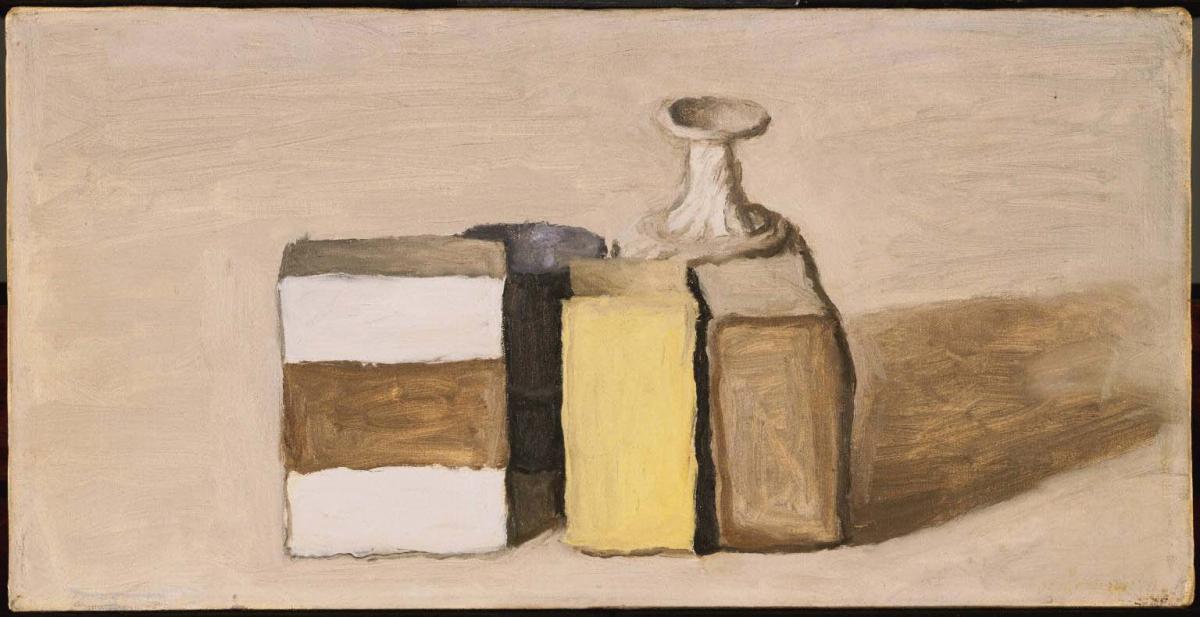Still Life
Giorgio Morandi ( 1953 )

Still life was the ideal subject for Giorgio Morandi, whose primary concern was to achieve a measured balance of composition and tone. Throughout his career he repeated the same motif: arrangements of objects he had in his studio – boxes, bottles, cups, vases, candlesticks. In this Still Life he displayed the finesse and clarity for which he was renowned. Centered on the horizontal canvas are five tightly grouped objects: in the foreground, and upright brown and white-striped box and two rectangular bottles laid on their sides, their bottoms facing the viewer. Morandi spent hours, even days, arranging, studying, sketching, and carefully painting his clusters of commonplace objects, transforming them into timeless “totems of poetic truth.”
In the course of his long and productive career, Morandi was influenced minimally by the contemporary Italian avant-garde. He had little interest in the dynamic forms of the futurists and experimented only briefly with the hallucinatory imagery of the metaphysical artists, such as Carrá and de Chirico. A solitary man who seldom left his native Bologna, he claimed as his foremost influences Cézanne and Seurat, and the early Italian Renaissance artists Giotto, Piero della Francesca, and Uccello, all of whom stressed balance, architectural form, and tonal relationships.